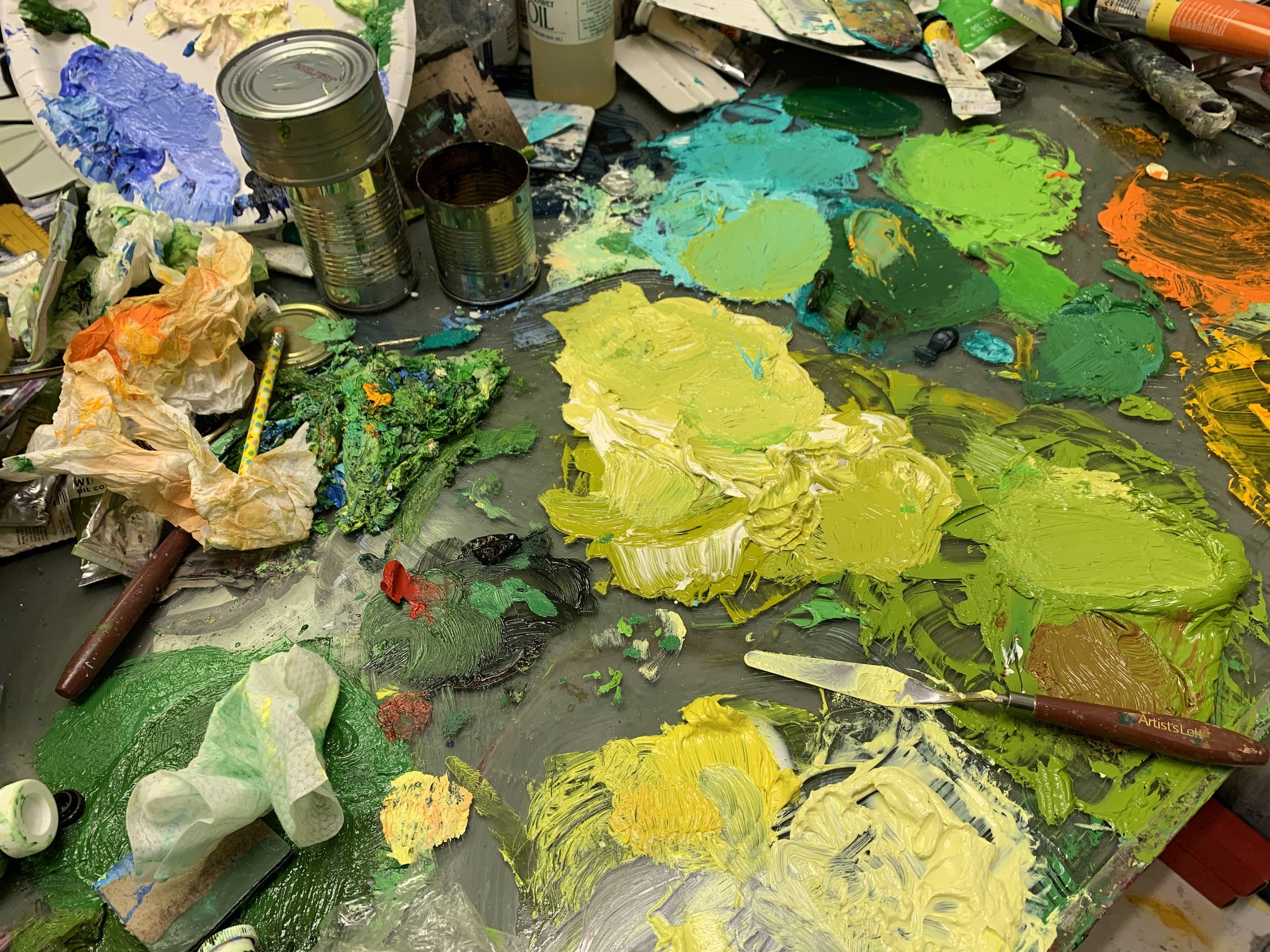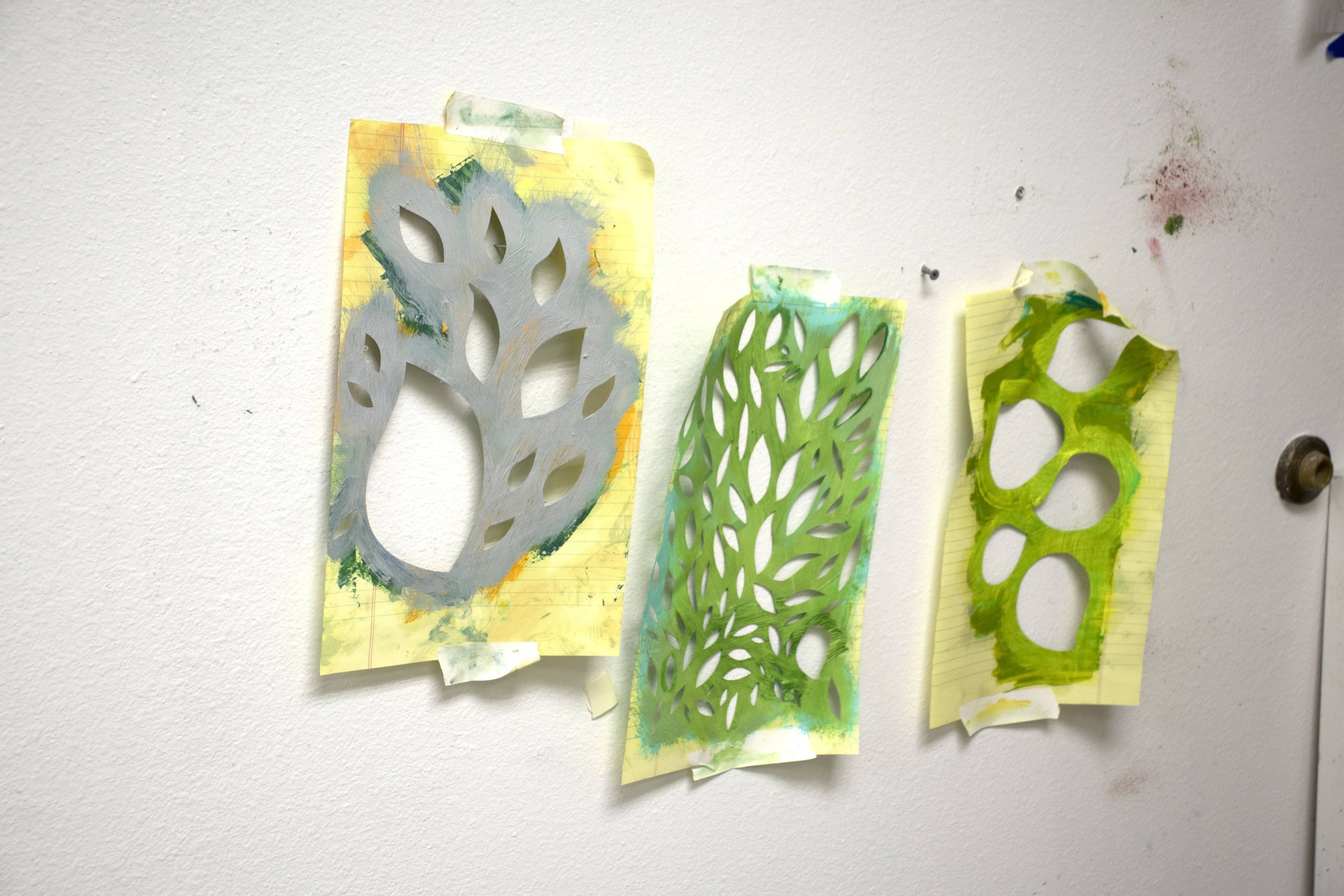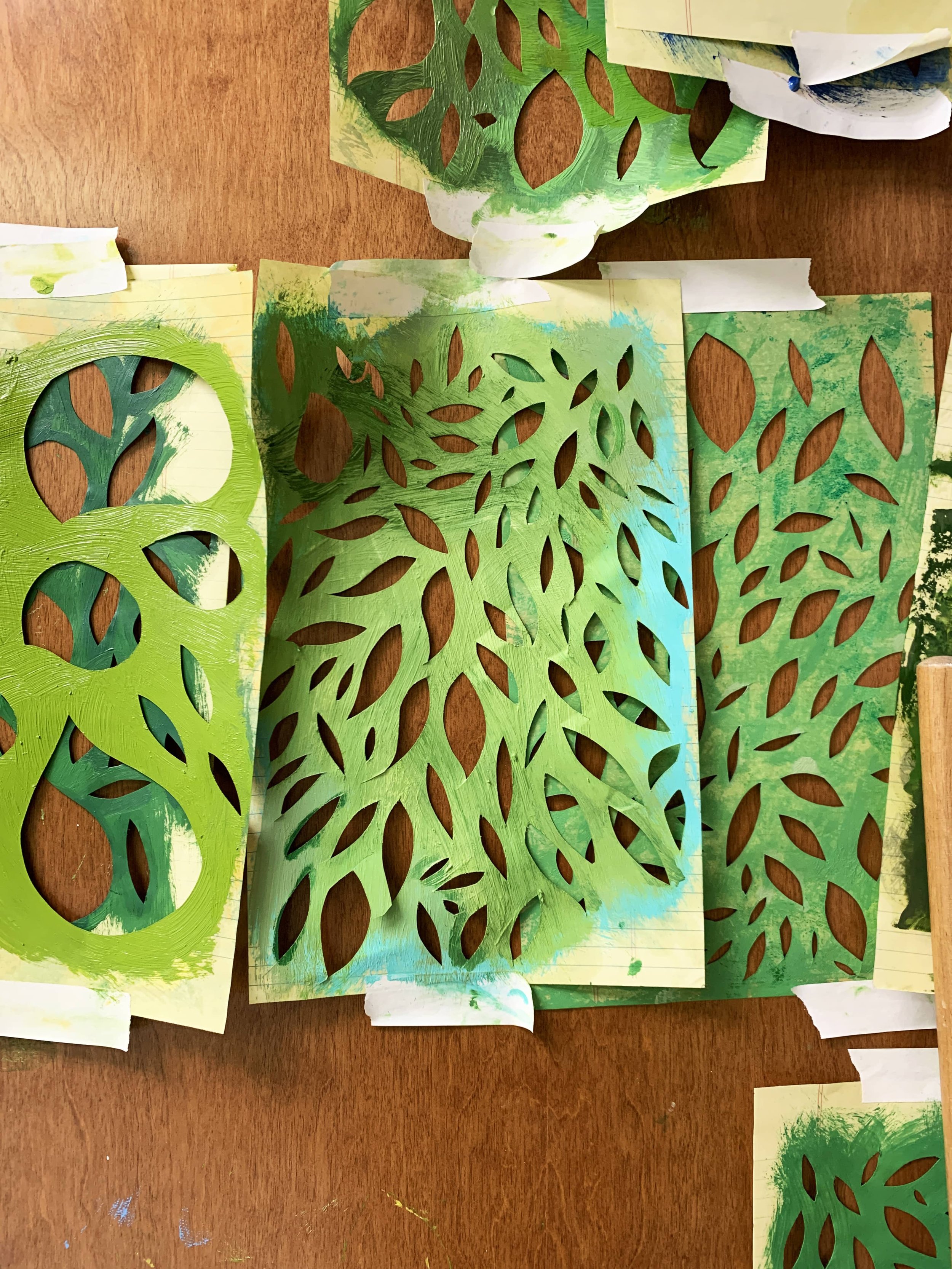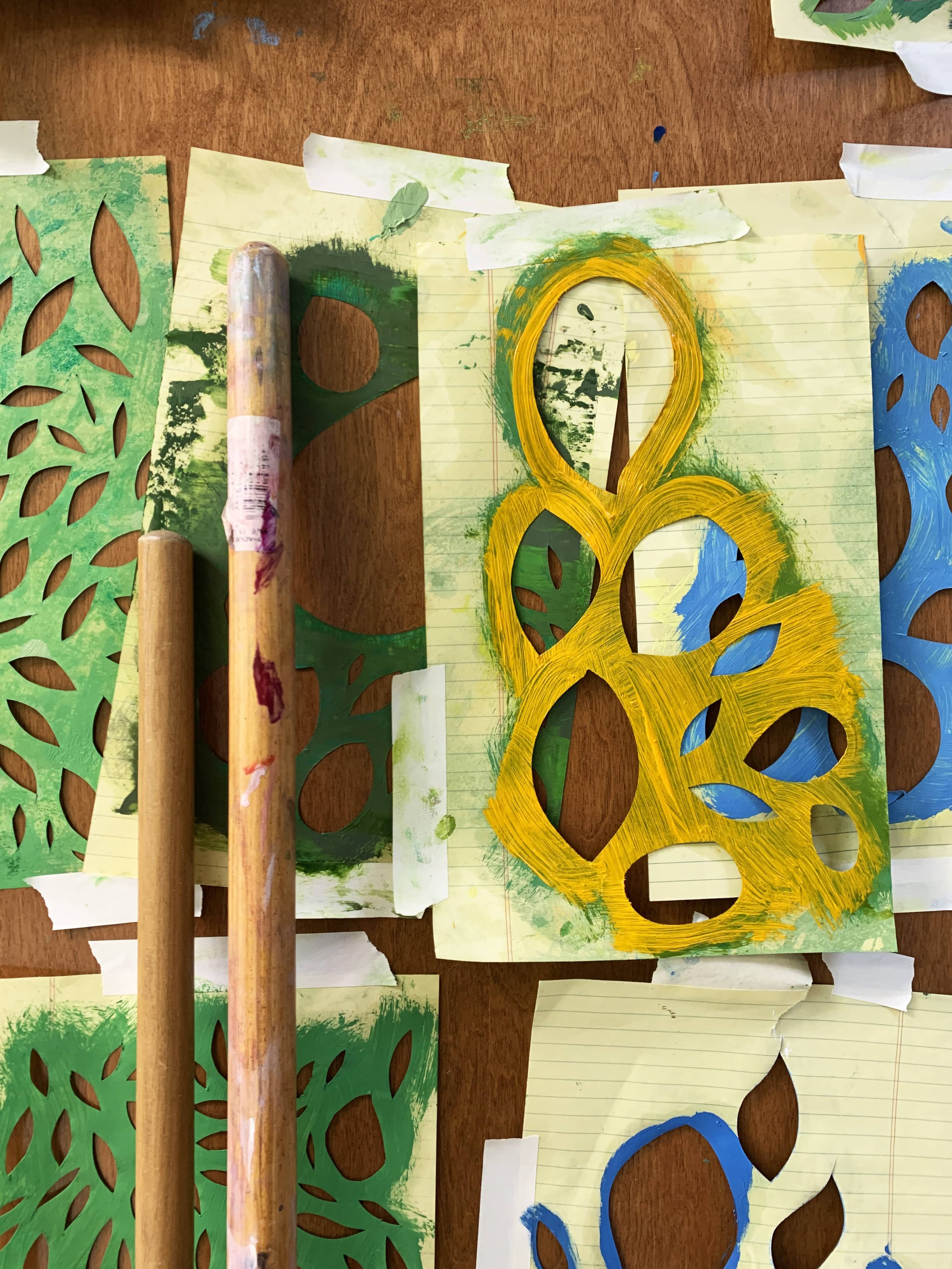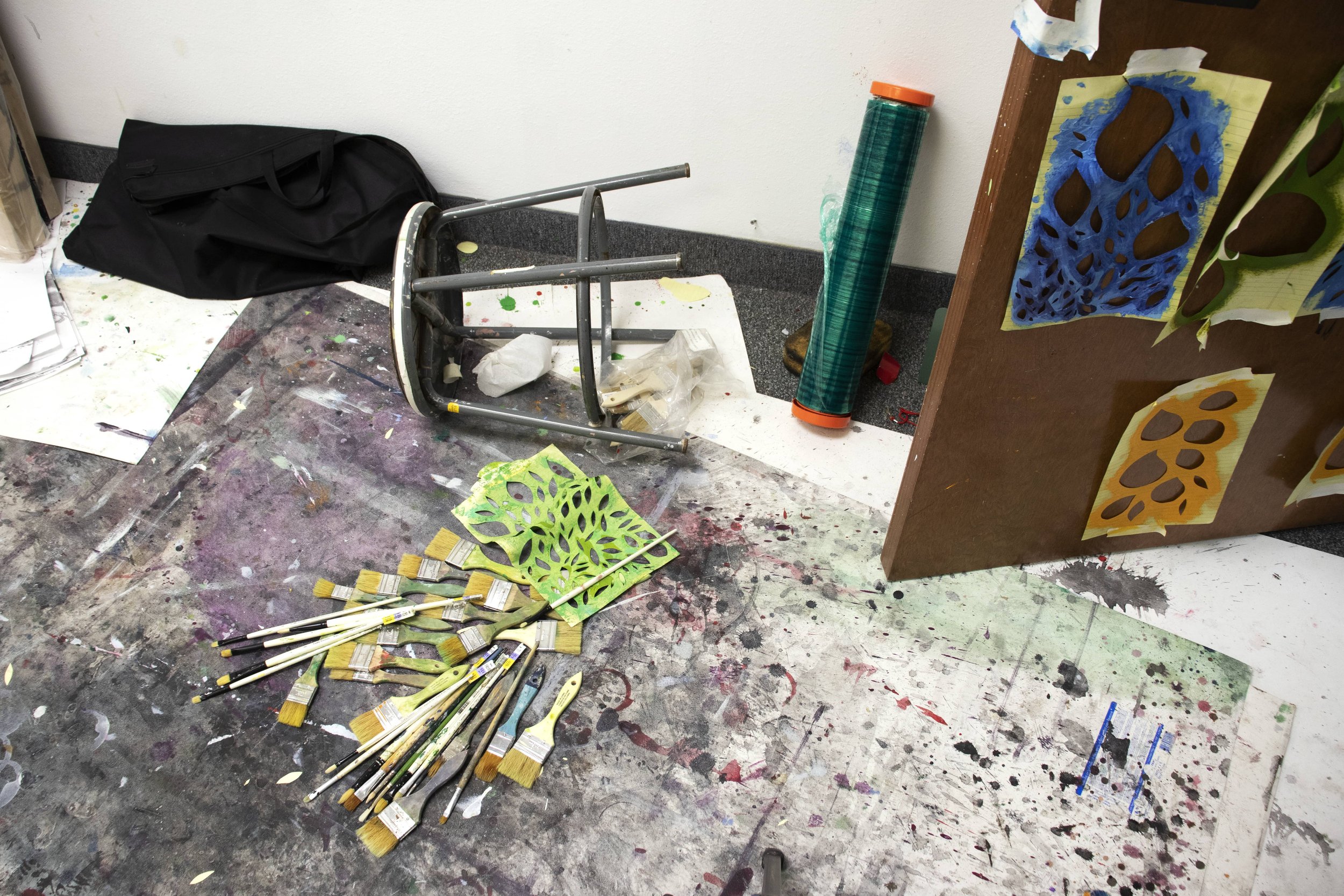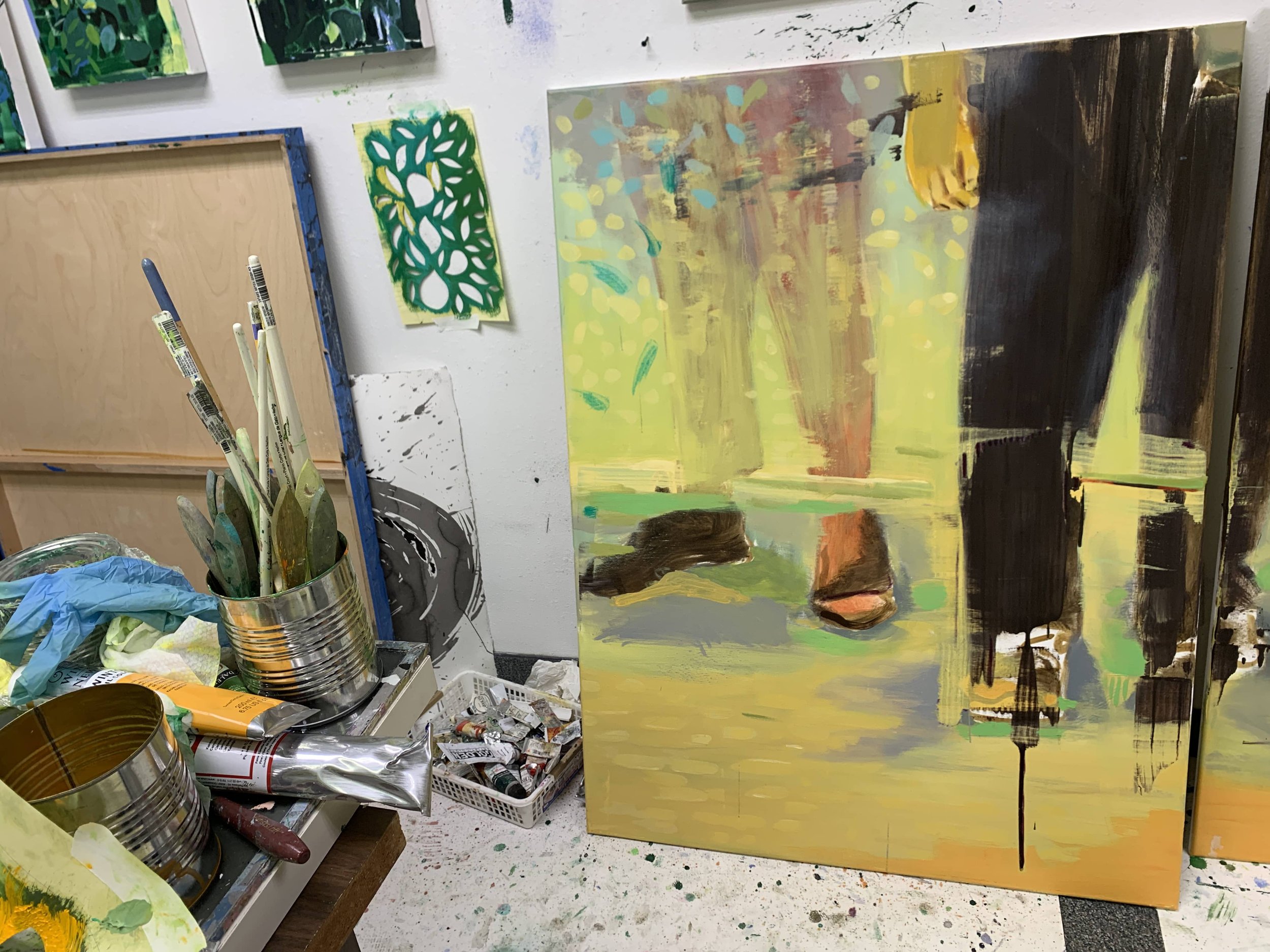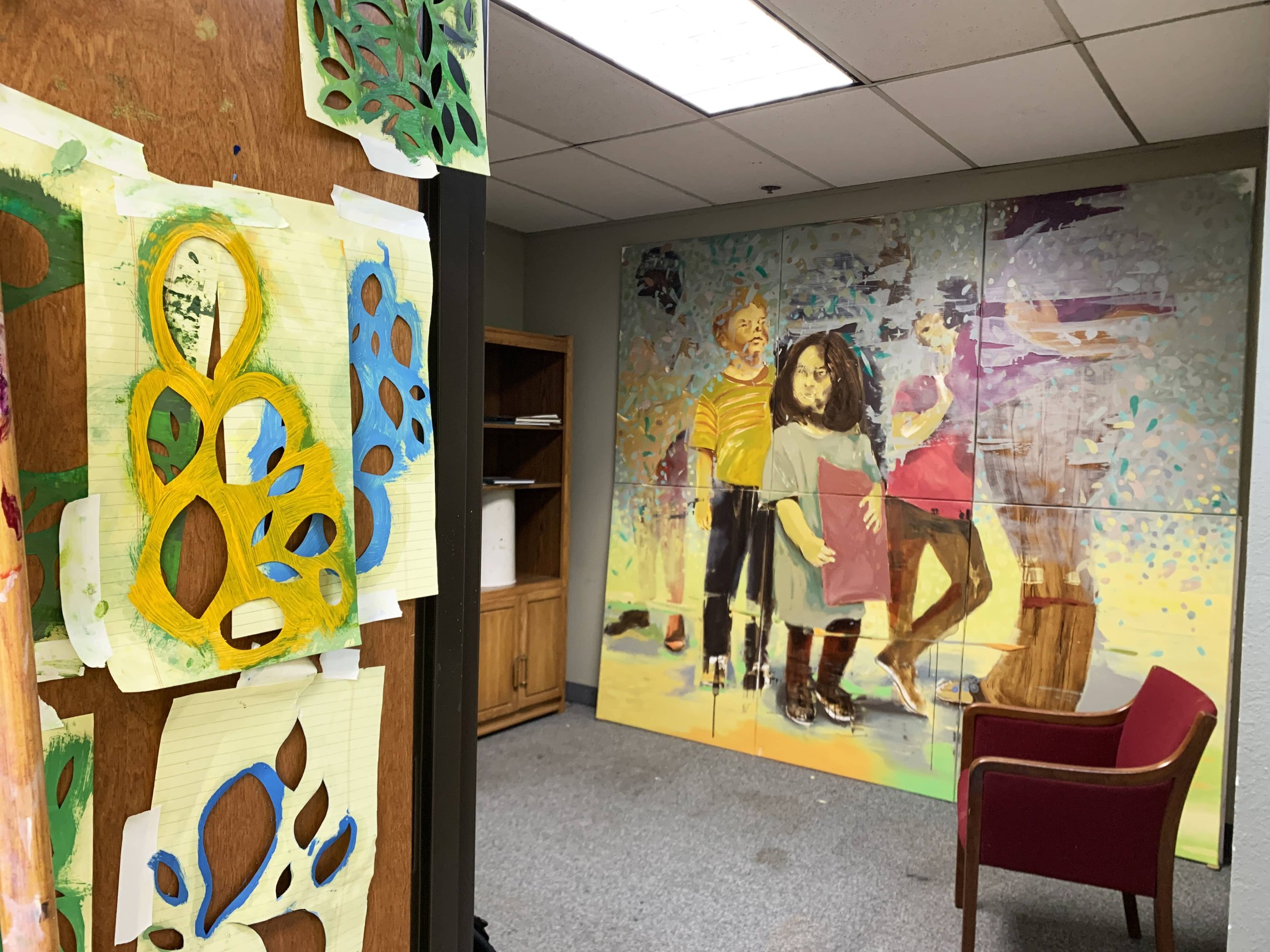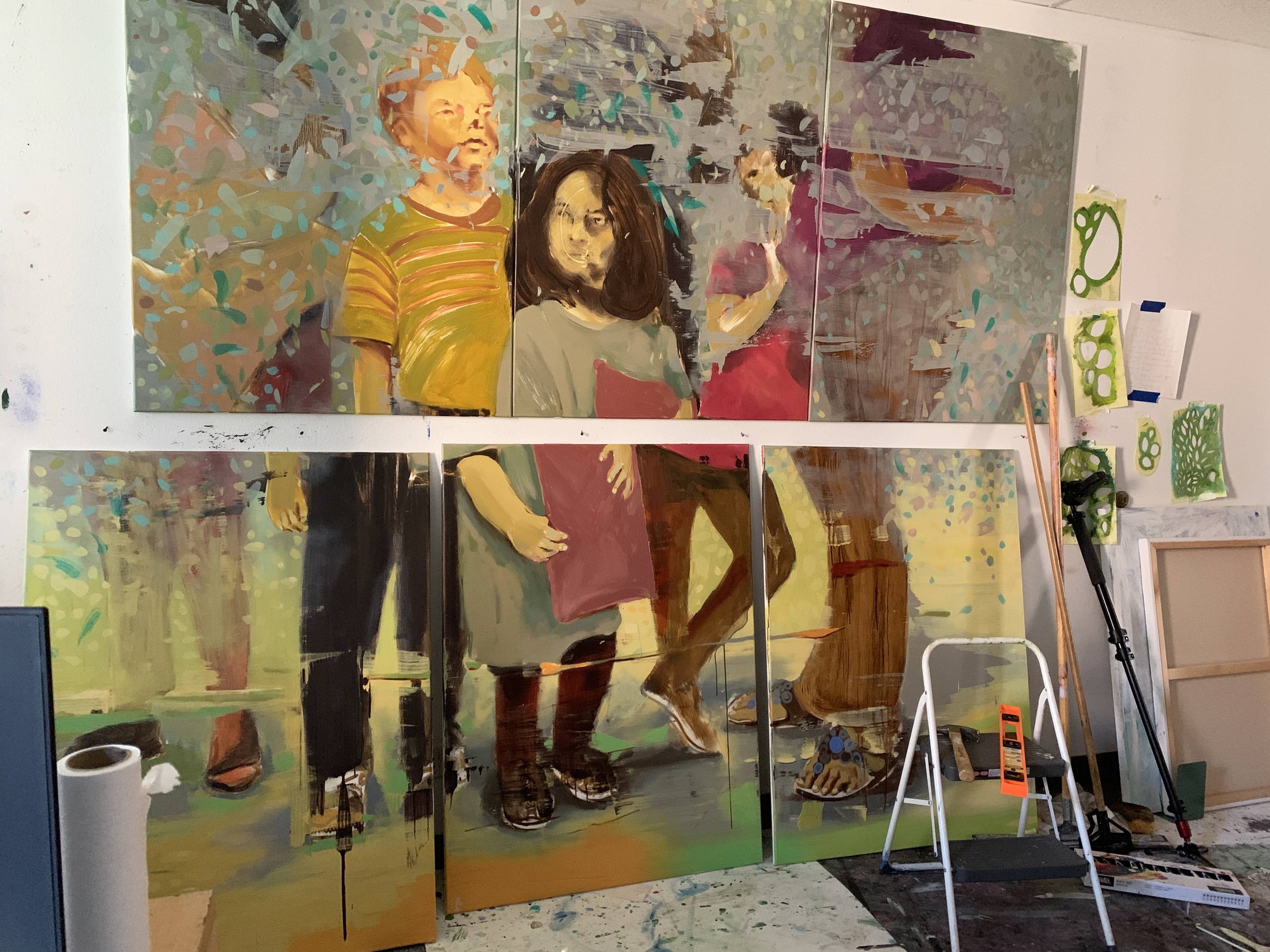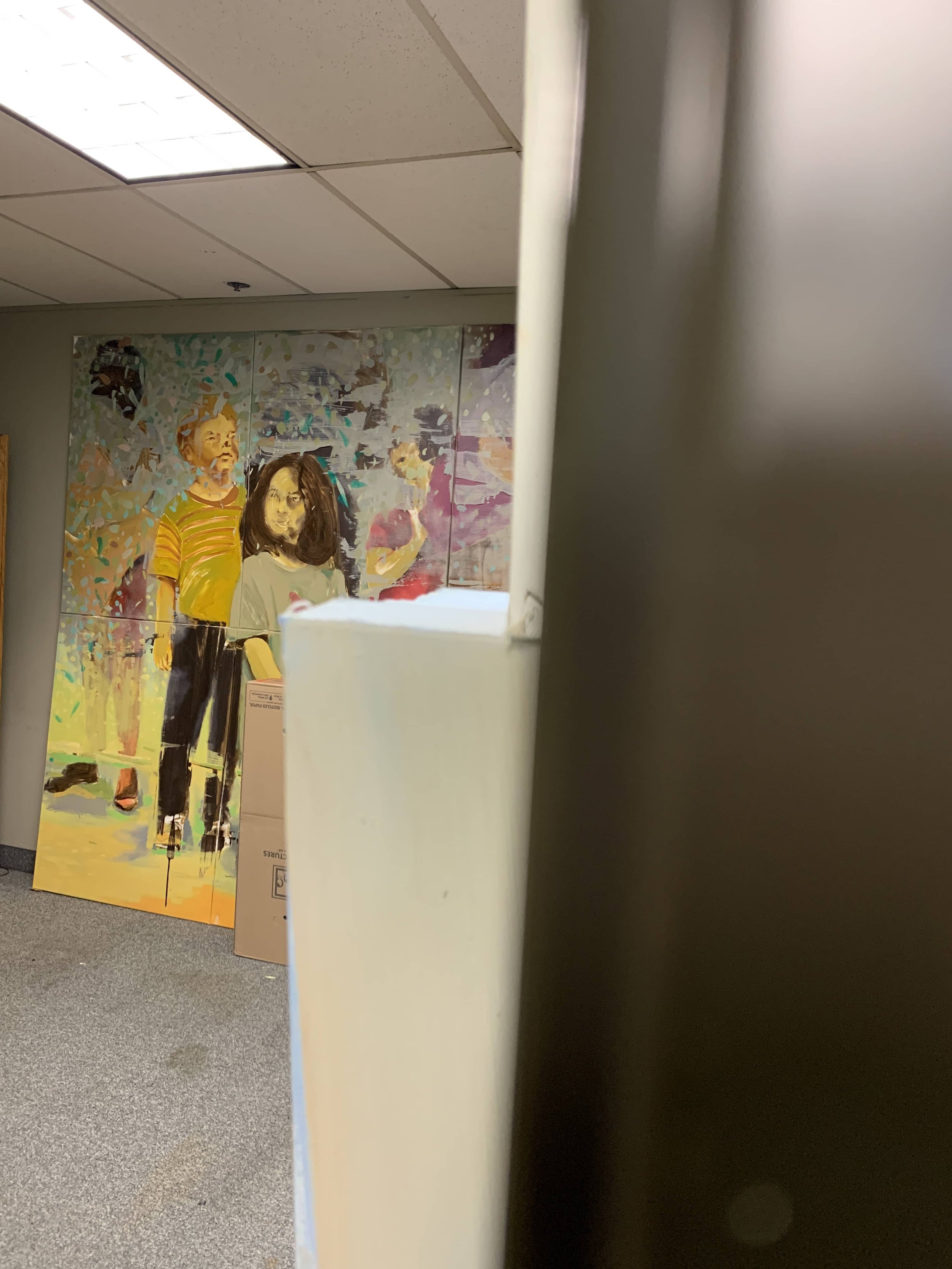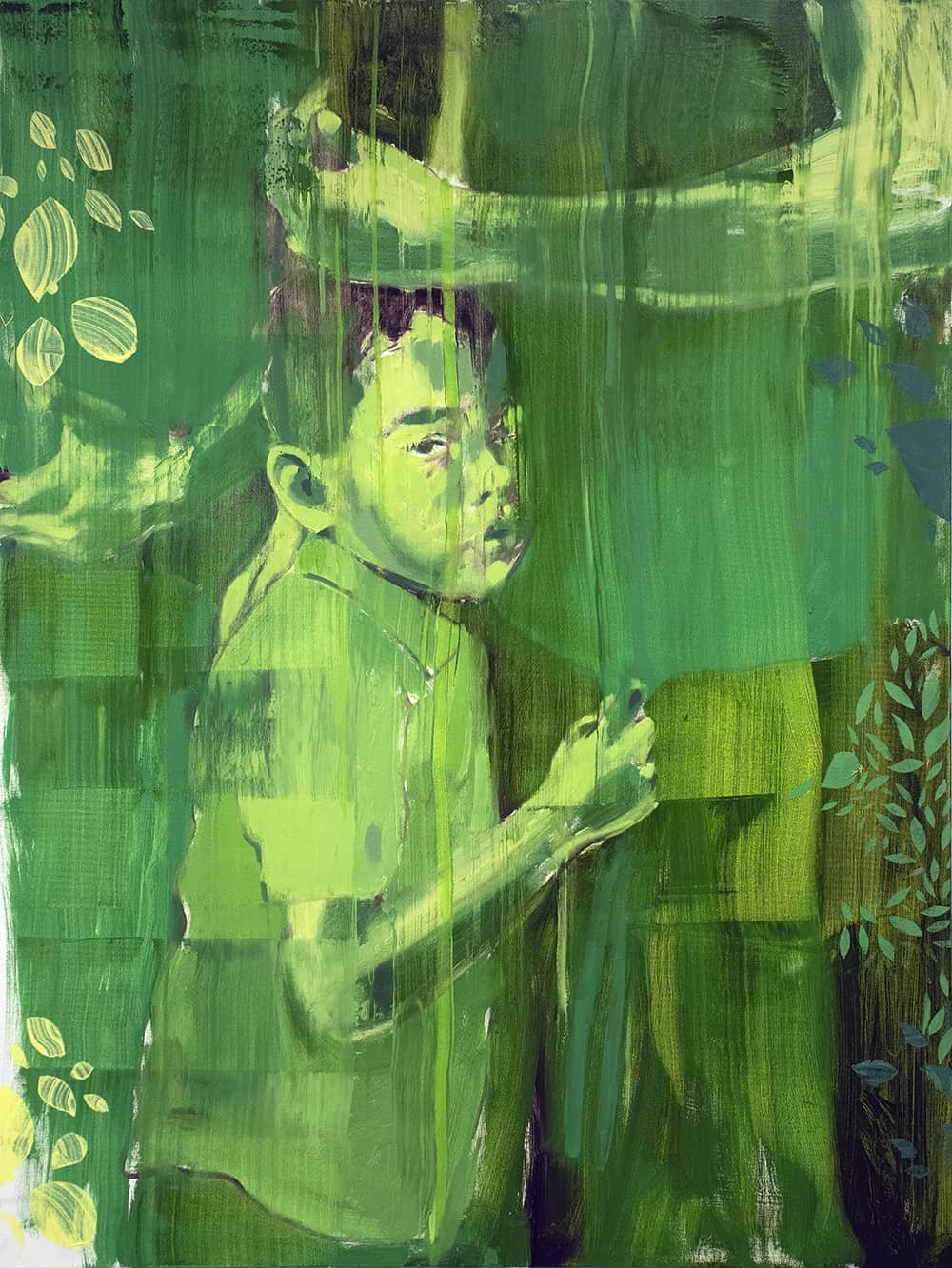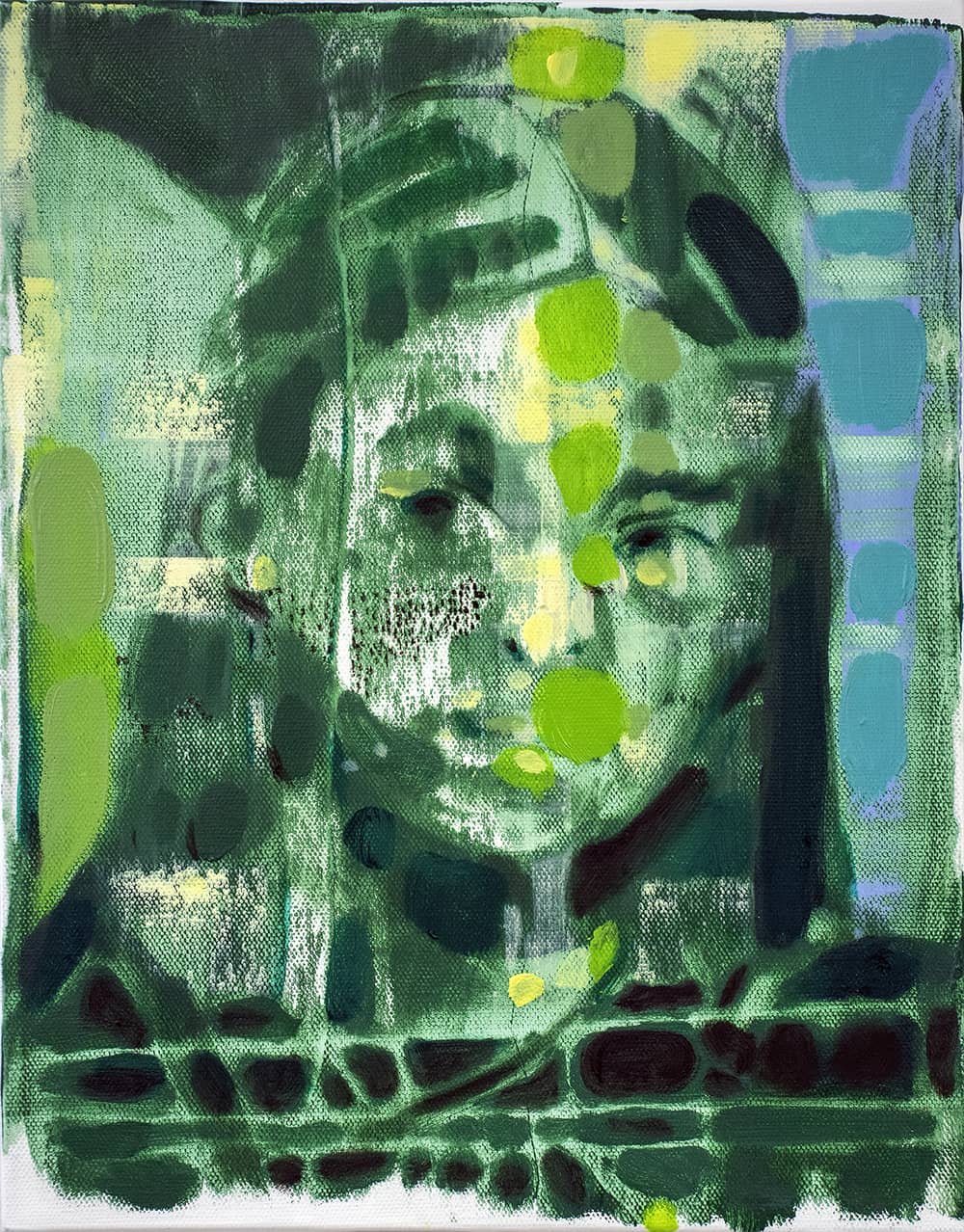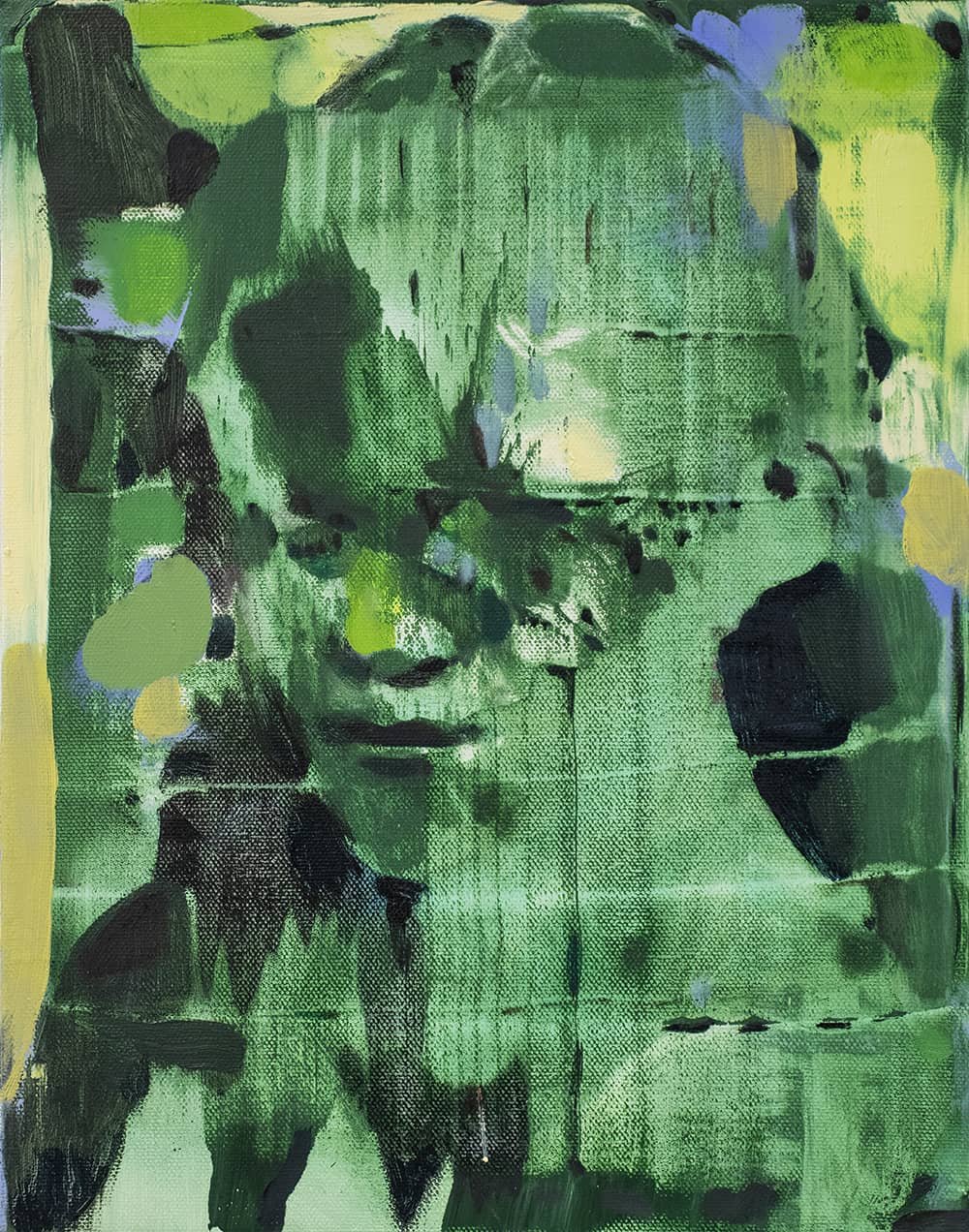Bartosz Beda: The Polish Abstract Artist
Congratulations to Bartosz Beda for earning his place as a Winner in the Boynes Monthly Art Award [January 2024 Edition]!
Who are you?
I'm Bartosz Beda, a Polish-born artist who combines abstract and figurative painting. My artistic practice transitioned from animation to studying fine arts in the UK, Germany, and Italy, culminating in my current base in the United States. My work delves into political and social themes inspired by my experiences and observations of life's cyclic nature.
As an immigrant artist, my Polish heritage and experiences in new cultures influence my art. Themes of displacement, identity, and belonging permeate my pieces, reflecting the universal human experience through my unique lens. My background has enriched my art and highlighted the importance of perspective and the connecting power of art across different experiences.
“Four Seasons, Spring”
Oil on Canvas
By Bartosz Beda
WHAT INSPIRED YOU TO UTILIZE painting AS A MEDIUM?
My exploration of painting was sparked by my brother's influence at the age of seven, setting a flame and a passion for expressing my vision through painting. This early exposure to creativity confirmed my calling as a painter, embarking on a process enriched by the psychological and philosophical exploration of an artist's life.
Painting for me transcends expression; it's an in-depth questioning into consciousness and existential inquiries inspired by icons like Vincent Van Gogh and Salvador Dali, with whom I share a birth date. Their influence has guided my investigation into painting as a space where emotion and imagination merge.
My work is philosophical, drawing from the existential reflections of Camus and Nietzsche, making painting a dialogue with life's fundamental questions. It's a destiny, a commitment to revealing how light, color, and form can tell the profound stories of our existence.
“Four Seasons, Spring”
Oil on Canvas
By Bartosz Beda
How would you describe your ARTwork?
My art, rooted in my Polish heritage and immigrant experience, navigates themes of identity, migration, and the human essence. I aim to convey the richness of feelings and life's complexity through a dynamic palette, reflecting life's varied facets.
Abstraction in my paintings is paramount to exploring the psyche's undercurrents, introducing fluidity that mirrors our inner changes. Simultaneously, symbolic elements ground these abstract explorations in the tangible, offering relatable forms and moments.
My series's recurring motif of 'echoes of seasons' symbolizes life's cyclical and changing nature, highlighting time's passage, change's inevitability, and human resilience.
“Four Seasons, Winter”
Oil on Canvas
By Bartosz Beda
What do you hope to communicate to an audience with your work?
My work engages in a continuous conversation with the dynamic realm of human experience, aiming to provoke thought, evoke emotions, and prompt a reevaluation of perceptions. It captures the subtleties of our times, including socio-political changes, historical influences, and individual transformation in a world that never stands still.
By embracing a spectrum of messages rather than a single, unchanging theme, my art invites diverse interpretations from viewers, enriching the dialogue between the piece and its audience.
I strive for my art to catalyze inquiry and reflection, encouraging viewers to engage beyond the visual aspect and delve into the intricacies of their personal and collective narratives. Through this process, my work seeks to foster a deeper understanding of ourselves and our surroundings, accommodating the ever-present flux of life.
“Whispers 01”
Oil on Canvas
By Bartosz Beda
Can you discuss the inspiration and thought process behind your winning work?
My art, rooted in my Polish heritage and immigrant experience, navigates themes of identity, migration, and the human essence. I aim to convey the richness of feelings and life's complexity through a dynamic palette, reflecting life's varied facets.
Abstraction in my paintings is paramount to exploring the psyche's undercurrents, introducing fluidity that mirrors our inner changes. Simultaneously, symbolic elements ground these abstract explorations in the tangible, offering relatable forms and moments.
My series's recurring motif of 'echoes of seasons' symbolizes life's cyclical and changing nature, highlighting time's passage, change's inevitability, and human resilience.
“Four Seasons, Fall”
Oil on Canvas
By Bartosz Beda
Can you walk us through the technical steps of creating your winning work?
The "Four Seasons Fall" technical creation blended traditional and innovative techniques. I utilized brushes for the finer details and broader strokes but incorporated non-traditional tools like squeegees, cardboard, and cutouts (stencils) to apply patterns and shapes. These tools allowed me to experiment with texture and layering, adding depth and complexity to the painting. Stencils and cutouts, in particular, enabled me to create sharp contrasts and intricate patterns, echoing the natural forms and rhythms of the changing seasons.
Mark-making with these tools was intuitive and exploratory, allowing me to interact dynamically and expressively physically with the canvas. The squeegees and cardboard pieces became extensions of my hands, moving the paint across the surface in bold, sweeping motions or delicate, nuanced touches. This approach not only contributed to the visual richness of the artwork but also imbued it with a sense of movement and life, capturing the essence of the fall season with its winds of change and transformation.
The painting is divided into six sections. Incorporating the symbolic meaning of the four cardinal directions—north, south, east, and west—into "Four Seasons Fall" allowed me to explore themes of guidance, transition, and the natural cycle of life. Each direction is significant: north for wisdom and challenge, south for warmth and abundance, east for new beginnings, and west for introspection and endings. Those, however, are open to interpretation.
The figures in the foreground are painted with earthy tones—browns, ochres, and subtle hints of red, grounding them in contrast to the more ethereal background. These warm, natural hues give the figures a solid presence, anchoring them within the scene. The use of yellow and green on the clothing of the left figure adds a harmonious connection to the background, suggesting unity between the human subjects and their surroundings.
Can you talk about your biggest learning experience during the process of creating your work?
The creative process is more than a means to an end; it's a process of self-discovery and emotional exploration. Painting, or "malarstwo" (in Polish), intertwines with the emotional and psychological experiences that shape us. Often perceived as cathartic, this process transforms emotional 'pain' into creative expression, leading to the concept of "painting—where the canvas witnesses the artist's internal battles and passions.
Through painting, I navigate my internal landscapes, confronting personal and universal challenges. Each brushstroke is a step towards understanding and solace, making creation a personal dialogue. "Painting is an acknowledgment of the emotional labor inherent in the artistic process, recognizing the dual nature of creation as both a struggle and a source of profound beauty and truth.
“Whispers 03”
Oil on Canvas
By Bartosz Beda
Can you discuss your biggest success since starting your artistic journey?
My art practice emphasizes continuous growth and deeper engagement with viewers rather than singular prizes. Success, for me, is measured by the connections my work fosters and its impact on both the audience and the broader art world.
When my paintings prompt introspection or resonate emotionally, that's where actual achievement lies. It's about contributing to the art world's evolving narrative and inspiring others. Success is an ongoing process driven by passion and the desire to communicate through art's universal language.
“Whispers of Echoes 01”
Oil on Canvas
By Bartosz Beda
Can you give us a piece of advice you wish you had known at the start of your career?
Reflecting on the advice I'd give my younger self, it's clear that an artist's independence is crucial. Don't rely solely on traditional galleries; build a personal infrastructure that's adaptable and ready for opportunities. It's essential to find a balance between managing your online presence and dedicating time to your art's conceptual depth. Consider assembling a support team to handle digital tasks, allowing you to focus on creative work. Success isn't just about external recognition or financial gain but about creating a lasting, authentic body of work. This understanding of independence, balance, and legacy is what I'd emphasize to my younger self and uphold in my current practice.
“Whispers of Echoes 02”
Oil on Canvas
By Bartosz Beda
What projects are you working on currently?
When the time is right and the pieces are ready to be shared, I look forward to unveiling them. Until then, I invite you to stay tuned, as the unveiling will be worth the wait. Maintaining an element of mystery can be a powerful strategy for an artist.
What is your dream project or piece you hope to accomplish?
My ultimate dream is to see my paintings exhibited at Tate Modern, leaving a legacy that resonates through generations with the art I create.
“Whispers of Echoes 03”
Oil on Canvas
By Bartosz Beda
As a winner, do you have any advice for artists who want to submit to awards, competitions, residencies, etc.?
To artists eyeing awards, residencies, or competitions, remember that perseverance is key. The journey is filled with challenges, including rejections that, while tough, are part of growth. It's essential to keep applying—each submission is a step forward, an opportunity to evolve and gain insight. Don't view rejections as setbacks but as moments to strengthen your practice.
Many celebrated artists once stood where you are, facing down their share of rejections before achieving breakthroughs. Embrace resilience, learn from every experience, and cherish the artist community for the support and wisdom it offers. Continue to create, apply, and believe in your art's worth. Your persistence is bound to pay off.
“Whispers”
Oil on Canvas
By Bartosz Beda
Lastly, I like to ask everyone what advice they would give to their fellow artists, what is your advice?
Stay true to your vision and persistent in your practice. Embrace the ebb and flow of creativity with patience, and always keep the dialogue between your art and audience open.
To view more of Bartosz Beda





